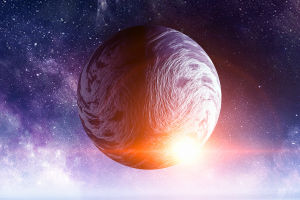Have you ever wondered how we got the ability to see far beyond the horizon? Well, the invention of the telescope was the key! In this article, we’ll dive deep into the history, development, and impact of this extraordinary tool that has revolutionized our view of the universe.
Whether you’re a curious observer or a seasoned stargazer, understanding how the telescope came to be is a journey worth exploring.
The Birth of the Telescope
The first practical telescope was invented in the early 17th century in the Netherlands. It all started when a Dutch craftsman named Hans Lippershey made the groundbreaking discovery of a simple device using lenses to magnify distant objects. Although his invention wasn’t perfect, it set the stage for an amazing leap forward in the world of observation. We owe a lot to his curiosity and ingenuity, as his invention soon captured the attention of scientists across Europe.
The Revolution in Astronomy
The development of the telescope didn’t stop with Lippershey. Just a few years later, Galileo Galilei, one of the most famous astronomers in history, took the telescope to new heights. By improving the lens and design, he was able to observe the moons of Jupiter, the craters of the Moon, and the phases of Venus. This new ability to observe celestial objects in greater detail changed astronomy forever, and it was one of the first steps in breaking down long-held beliefs about the universe.
From Lenses to Mirrors
As time went on, telescopes evolved from simple lens-based designs to more advanced instruments. The next big leap in telescope technology came in the form of the reflecting telescope, invented by Isaac Newton in 1668. Instead of using lenses to gather light, Newton’s design used mirrors, which allowed for much larger telescopes that could gather more light and provide clearer images. This change made it possible to see even farther into space, and it opened up new possibilities for astronomers.
The Telescope Today
Fast forward to the 20th century, and the telescope had transformed into an even more powerful tool. The invention of radio telescopes in the 1930s and infrared telescopes in the 1960s allowed scientists to explore the universe in new wavelengths, opening up entire new realms of discovery. These advanced telescopes are used to observe phenomena that are invisible to the unaided eye, such as cosmic radio waves or distant galaxies that emit infrared radiation.
Today, the use of telescopes is not limited to professional astronomers alone. Amateur astronomers and stargazing enthusiasts now have access to advanced telescopes that allow them to observe the night sky in incredible detail. Whether it’s using a high-powered telescope for astronomy or a smaller, more portable one for casual stargazing, telescopes continue to connect us to the vast and awe-inspiring universe.
How Telescopes Impact Our Daily Lives
It’s easy to think of telescopes as just a tool for stargazing, but their impact extends far beyond that. The invention of the telescope has had profound effects on many fields, from science and technology to navigation and communication. For example, the development of satellite telescopes, such as the Hubble Space Telescope, has not only deepened our understanding of space but also paved the way for innovations in communications and weather forecasting.
Moreover, the scientific discoveries made possible by telescopes have changed the way we understand our place in the universe. The study of distant galaxies, black holes, and cosmic radiation has forced us to rethink some of our oldest assumptions about the nature of the cosmos.
A Window to the Universe
The telescope is more than just a tool – it is a bridge that connects us to the vast, mysterious universe. From its humble beginnings in the Netherlands to its current use in space exploration, it has transformed the way we see the world and the cosmos. As technology continues to advance, who knows what new discoveries await us? The journey of the telescope is far from over, and as we continue to gaze into the heavens, we may find ourselves uncovering even more mysteries that challenge our understanding of reality.
So, what do you think, Lykkers? Are you ready to look at the stars in a whole new way? Grab a telescope and start your journey of discovery – the universe is waiting for you!
Telescopes: Crash Course Astronomy #6
Video by CrashCourse


